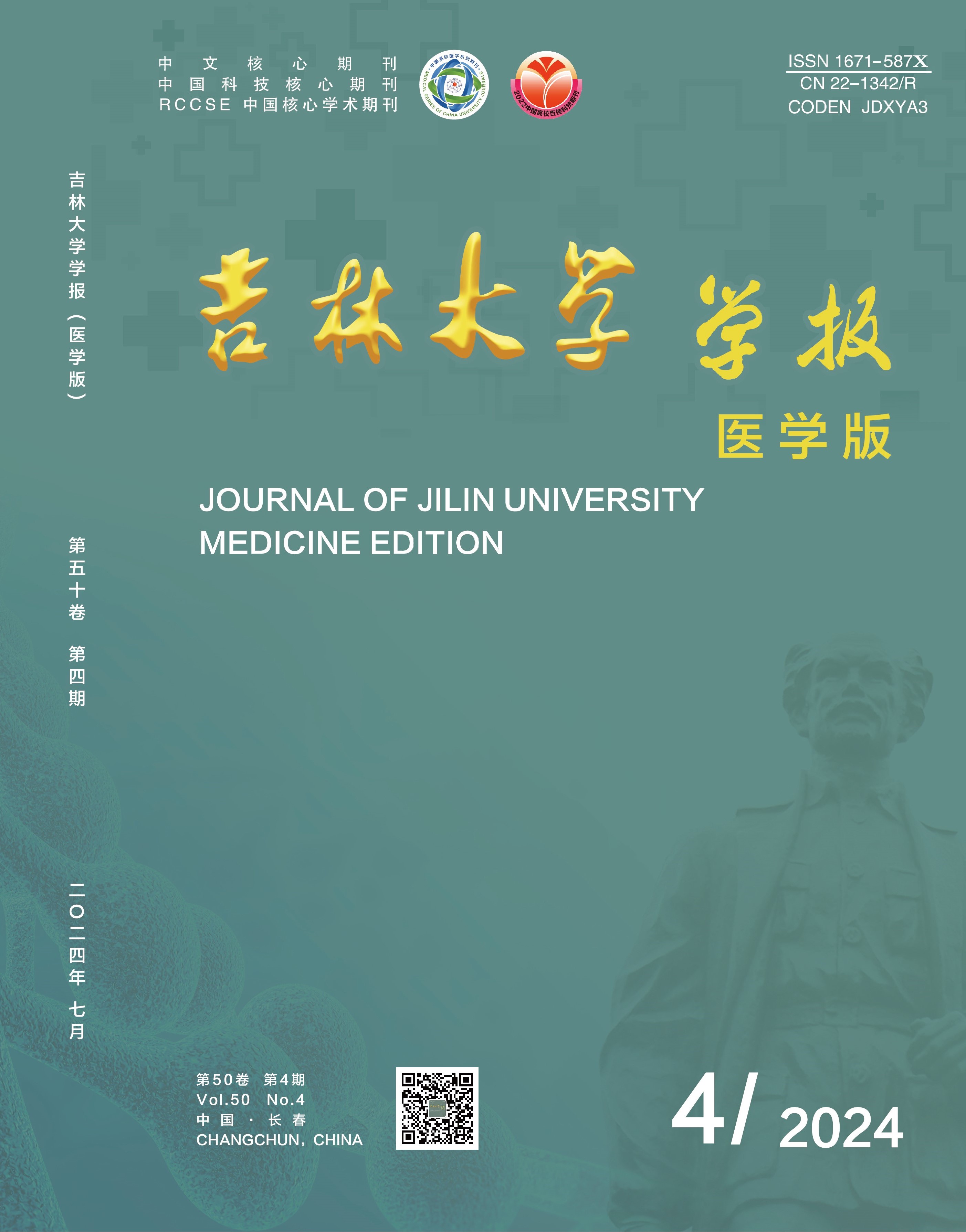|
|
Improvement effect of eleutheroside B on learning and memory abilities of fatigue mice and its mechanism of activating Keap1/Nrf2/ARE signaling pathway
ZHANG Qian, FENG Qingxia, ZHOU Zhengyi, LI Ruiqi, FANG Lei, YANG Qiunan, SHENG Yu, LU Xuechun, DU Peige, AN Liping
Journal of Jilin University(Medicine Edition). 2020, 46 (04):
771-778.
DOI: 10.13481/j.1671-587x.20200417
Objective: To investigate the effect of eleutheroside B (ELB) on the learning and memory abilities in the fatigue mice, and to clarify its possible mechanism. Methods: A total of 60 ICR mice were randomly divided into control group (received distilled water by gavage, meditation experiment), model group (received distilled water by gavage, swimming experiment), ELB (C) group (received 80 mg·kg-1 ELB by gavage, meditation experiment) and ELB (M) group (received 80 mg·kg-1 ELB by gavage, swimming experiment) (n=15). After 4 weeks of continuous administration, the anti-fatigue abilities of the mice were observed with rotating rod experiment, and the learning and memory abilities of the fatigue mice were detected by morris water maze experiment and dark avoidance experiment; the levels of lactic acid (LD) in serum of the mice were detected by colorimetry, the activities of lactate deoxygenase (LDH) in serum of the mice were detected by microenzyme labeling method, the levels of urea nitrogen (BUN) in serum of the mice were detected by urease method, the activities of superoxide dismutase (SOD) in brain tissue of the mice were detected by hydroxylamine method,and the levels of malondialdehyde (MDA) in brain tissue of the mice were detected by thiobarbituric acid method; the levels of reactive oxygen species (ROS), endothelial nitric oxide synthase (eNOS), γ-aminobutyric acid (GABA) and glutamate (GLU) in brain tissue of the mice were detected by enzyme linked immunosorbent assay; the activities of adenosine triphosphase (Na+K+-ATPase, Mg2+-ATPase, Ca2+-ATPase, Ca2+Mg2+-ATPase) in brain tissue of the mice were detected by spectrophotometry.Western blotting method was used to detect the expression leves of Kelch-like ECH-associated protein-1 (Keap1),nuclear factor E2-related factor 2 (Nrf2) and heme oxygenase-1 (HO-1) proteins in brain tissues of the mice. HE staining was used to observe the structures of hippocampal neurons in brain tissue of the mice. Results: Compared with control group, the rotating rod time of the mice in model group was shortened (P<0.05), the water maze latency was extended (P<0.05), the dark avoidance latency was shortened (P<0.05), and the number of errors was increased (P<0.05); the activity of serum LDH and the levels of serum LD and BUN were increased (P<0.05); the level of eNOS, the activities of SOD, Na+K+-ATPase, Mg2+-ATPase and Ca2+-ATPase, Ca2+Mg2+-ATPase, and the GLU/GABA ratio in brain tissue of the mice were decreased (P<0.05), and the MDA and ROS levels were increased (P<0.05); the Keap1 protein expression level was increased (P<0.05),and the Nrf2 and HO-1 protein expression levels were decreased (P<0.05); the rotating rod time of the mice in ELB (C) group was prolonged(P<0.05), but the differences in the other indicators had no statistical significance (P>0.05).Compared with model group, the rotating rod time of the mice in ELB (M) group was prolonged(P<0.05), the water maze latency was shortened (P<0.05), the dark avoidance latency was prolonged (P<0.05), and the number of errors was reduced (P<0.05); the activity of serum LDH and the levels of serum LD and BUN were decreased (P<0.05), the level of eNOS and the activities of SOD, Na+K+-ATPase, Mg2+-ATPase and Ca2+-ATPase, Ca2+Mg2+-ATPase,and the GLU/GABA ratio in brain tissue of the mice were increased (P<0.05), and the MDA and ROS levels were decreased (P<0.05);the Keap1 protein expression level was decreased (P<0.05),and the Nrf2 and HO-1 protein expression levels were increased (P<0.05).Compared with control group, the arrangement of neurons in the hippocampus of the mice in model group was loose and unclear, the morphology of some hippocampal cells was changed, and there were obvious pathological changes.Compared with model group, the structures of the hippocampus region of the mice in ELB(C) and ELB(M) groups were clear, the number of neurons was increased,the arrangement was relatively tight and orderly, and the morphology and volume of hippocampal neurons tended to be normal. Conclusion: ELB can improve the learning and memory abilities of the fatigue mice, and its mechanism may be related to regulating the expressions of Keap1/Nrf2/ARE signaling pathway-related factors.
References |
Related Articles |
Metrics
|

 Table of Content
Table of Content
 Guide to Authors
Guide to Authors


